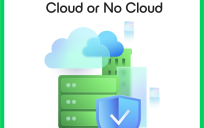![]()
Cloud computing is a huge trend, and for good reason—it’s an incredibly convenient form of computer interaction. Rather than storing data and software on your local computer or phone, cloud computing outsources these functions to Internet-based servers, which you can access anywhere, anytime.
Advantages of the cloud. Using the cloud has many benefits for government organizations. Software running on the cloud—Software As A Service (SAAS)—is always up to date, so users don’t have to purchase, install, and update pieces of software on their local machines. Data storage on the cloud offers centralized access to shared files, eliminating version control problems. Cloud computing can also save money. In 2011, the federal government implemented a “cloud-first” strategy, which has saved billions of dollars per year.
Where the cloud comes from. The term cloud computing conjures imagery of data floating in the sky, diffuse and ubiquitous and perhaps a little bit mysterious. But it’s worth remembering that cloud computing is really just an elaboration of a very old, and very down-to-earth, form of computing: the client-server model.
Conceptually, the client-server model has roots in the 1950’s, as governments and businesses increasingly demanded new electronic mainframe computers. To interact with mainframes, workers used terminals that connected to the mainframe over phone lines. The giant mainframe did all of the hard computing work—the terminals simply gathered input from users and displayed output sent from the mainframe. Programs helped the mainframe efficiently distribute resources among the various “jobs” assigned to it via the terminals.
Almost sixty years later, we still use the same model for cloud computing. Your smartphone or personal computer, like a terminal, takes your input and sends it to a giant, centralized powerhouse computer—a server in a data center. The server chugs through all the tough calculations and sends the processed data back to your local computer.
The perils of the cloud. The cloud is not so ethereal—it’s a bunch of computers, connected over the Internet. Often locked away in huge data centers, cloud-based servers all require a huge amount of electricity to perform their calculations for client devices. They also generate a great deal of heat, which in turn requires air conditioning or other cooling methods to control. In 2012, The New York Times reported on the large amount of pollution generated by these “cloud factories.” In 2014, according to a report for the Department of Energy, data centers consumed almost 70 billion kilowatt-hours of energy—or 1.8 percent of all energy consumption in the United States.
However, many data centers have achieved impressive energy efficiency, particularly large operations. (For government organizations running their own server rooms and data centers, Energy Star offers a handful of tips to save energy.) Security on the cloud remains a concern, particularly for sensitive government data that makes a compelling target for hackers and foreign cyberattacks. But antiquated computing systems used elsewhere by the government have their own major security vulnerabilities.
Cloud computing is powerful and revolutionary, but it’s still based on the same building blocks of networking established in the 1950’s.
Adnan Mahmud is part of the GovLoop Featured Blogger program, where we feature blog posts by government voices from all across the country (and world!). To see more Featured Blogger posts, click here.





Leave a Reply
You must be logged in to post a comment.